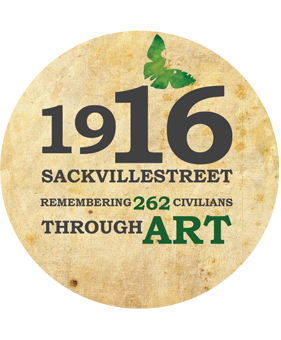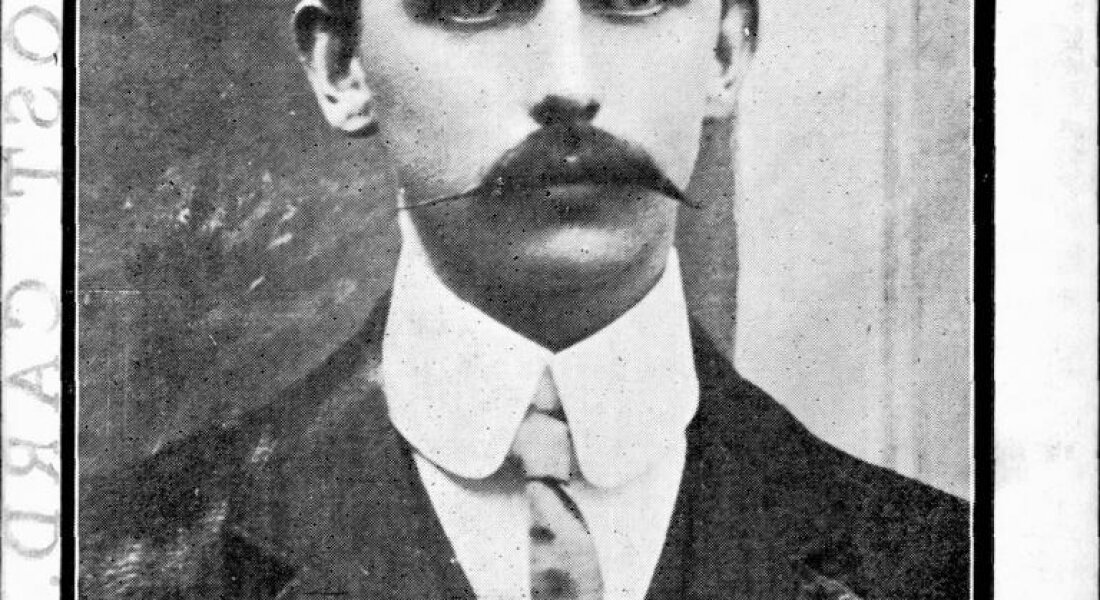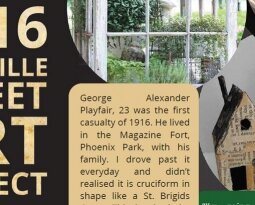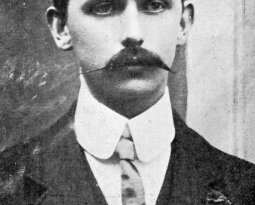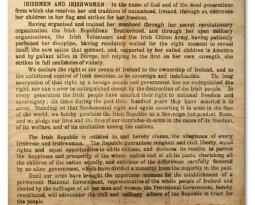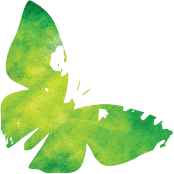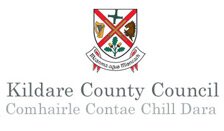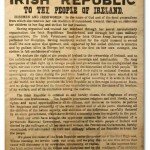Eamon Ceannt
Eamonn was born in Galway in 1881, he was a founder of the Irish Volunteers. He had a keen interest in Irish culture, especially in Irish language and history. He was also a musician and a talented uileann piper and played for Pope Pius X on one occasion He was the commander of the Fourth Battalion of Irish Volunteers during the 1916 Rising and took control of the South Dublin Union (St. James’s Hospital). He was executed on the 8th of May 1916.
James Connolly
(1868-1916) was born in Edinburgh. He emigrated to Dublin in 1896 where he founded the Irish Socialist Republican Party. He spent time in America and then returned to Ireland to look for worker’s rights with a man called James Larkin. There was a workers strike in Dublin in 1913 and many of the workers were attacked by the police. James Connolly was one of the founders of an army set up to protect workers. It was called the Irish Citizen Army. During the Easter Rising he was appointed Commandant-General of the Dublin forces. About 150 of the rebels took over the General Post Office in Dublin and James Connolly lead that group. He was wounded in the G.P.O. and was executed on the 12th of May 1916. He was the last of the leaders to be executed, he was so badly wounded that he could not walk and was executed sitting down.
Joseph Mary Plunkett
was born in 1887 in Dublin. He was the son of a papal count and was educated in England and Ireland. He had poor health but despite this he helped to establish an Irish national theatre. Joseph Plunkett joined the Irish Volunteers in 1913, and later became a member of the Irish Republican Brotherhood. During the planning of the Rising, Plunkett was appointed Director of Military Operations, with overall responsibility for military strategy. Plunkett was one of the rebels who were stationed in the G. P. O. during the 1916 Rising. On the night before he was executed while in Kilmainham Gaol he married his sweetheart Grace Gifford and was executed on the 4th ofMay 1916.
Patrick (Pádraig) Pearse
(1879-1916) was born in Dublin and had a great interest in the Irish language and spent many summers in Rosmuc in Galway learning Irish. He established a school for boys, St. Enda’s School, where children could learn about Irish culture and language. During the 1916 Rising, Pearse was in charge of the General Post Office (G.P.O.). When the British army overpowered the Irish rebels, it was Pearse who ordered their general surrender in order to save further loss of life. He was tried and executed by a firing squad in Kilmainham Jail on the 3rd of May 1916. His younger brother Willie was also executed.
‘The Mother’
By Pádraig Pearse
I do not grudge them: Lord, I do not grudge
My two strong sons that I have seen go out
To break their strength and die, they and a few,
In bloody protest for a glorious thing,
They shall be spoken of among their people,
The generations shall remember them,
And call them blessed;
But I will speak their names to my own heart
In the long nights;
The little names that were familiar once
Round my dead hearth.
Lord, thou art hard on mothers:
We suffer in their coming and their going;
And tho’ I grudge them not, I weary, weary
Of the long sorrow–And yet I have my joy:
My sons were faithful, and they fought.
This poem was written by Padraig Pearse to his Mother the night before his execution..
Séan Mac Dermott
Séan Mac Dermott was born in Leitrim in 1884 but emigrated to Glasgow in 1900, and in 1902 he moved to Belfast. He was interested in the Irish language and culture and joined a group called the Gaelic League. He joined the Irish Republican Brotherhood (I.R.B.) in 1906 and ran the I.R.B. newspaper Irish Freedom in 1910. Séan MacDiarmada got a disease called polio in 1912 but he was still appointed to high positions in the Irish Volunteers and in the I.R.B. Séan MacDiarmada fought in the G. P. O. during the 1916 Rising. He was executed on the 12th ofMay 1916.
Thomas Clarke
had been imprisoned before 1916 because of his involvement in other fights for Irish freedom. He was a member of the Fenians and was also one if the leaders of the Irish Republican Brotherhood (I.R.B.) in 1916. He spent fifteen years in penal labour for his role in a bombing campaign in London between 1883 and 1898. He was a member of the Supreme Council of the I.R. B. from 1915 and was one of the rebels who planned the 1916 Rising. He was the first signatory of the Proclamation of Independence and was with the group that occupied the G. P. O. He was executed on the 3rd of May 1916.
Thomas MacDonagh
was from Tipperary and was born in 1878. He was a teacher and later taught at St. Enda’s School; the school he helped to found with Patrick Pearse. He was appointed director of training for the Irish Volunteers in 1914 and later joined the IRB. He was commander of the Second Battalion of Volunteers that occupied Jacob’s biscuit factory and surrounding houses during the 1916 Rising. He was executed on the 3th of May 1916.
“Life springs from death, and from the graves of patriot men and women spring live nations”…
ORATION OF P. H. PEARSE OVER THE GRAVE OF O’DONOVAN “ROSSA”
